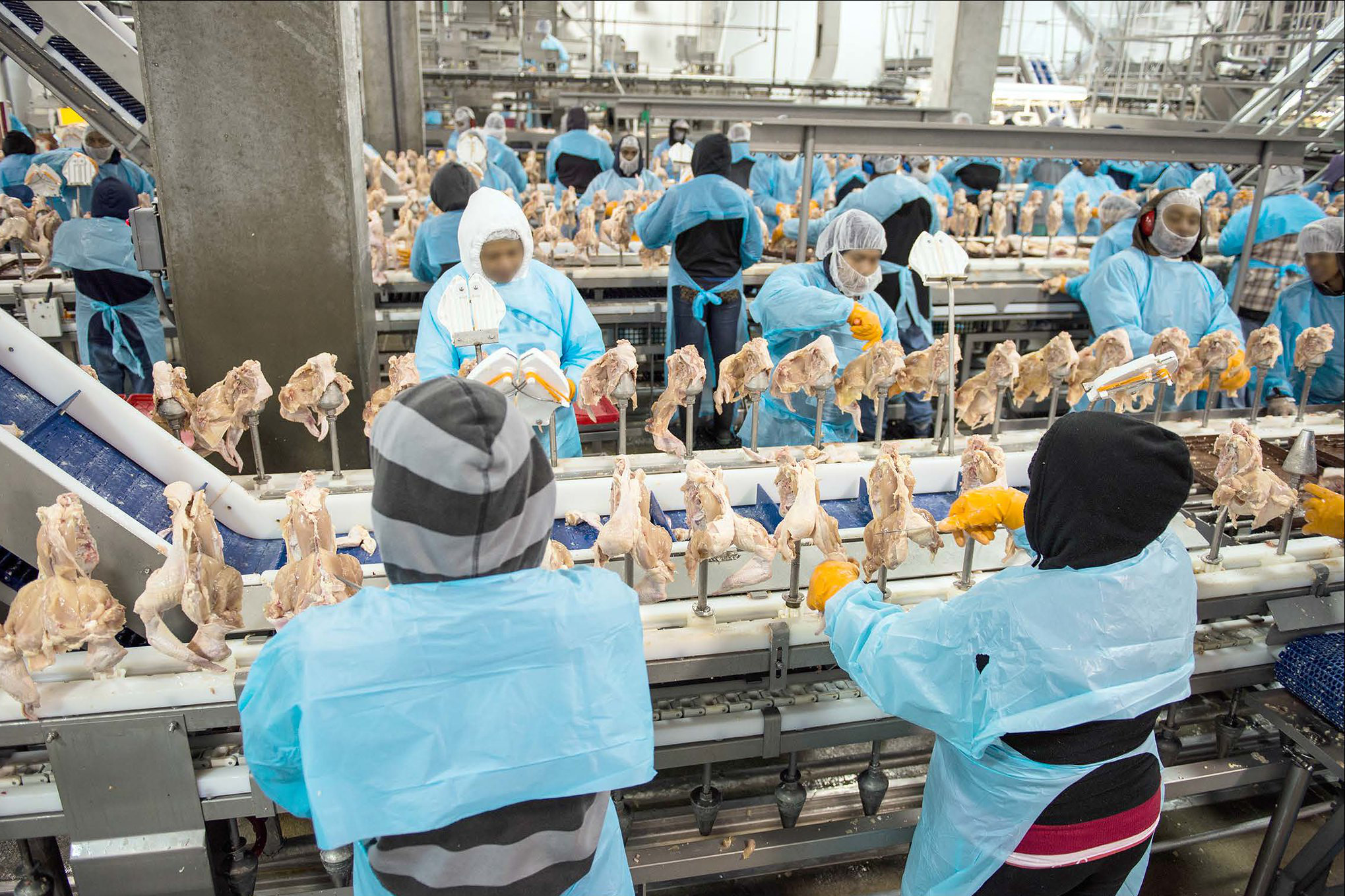
About 30 meatpacking plants had shutdowns since the beginning of the pandemic, affecting 45,000 workers, but most have now reopened. (Photo taken in 2016, U.S Government Accountability Office/flickr))
Meatpacking workers are facing some of the biggest workplace risks as the industry death toll continues to rise, while facilities whir back into production.
Figures from the U.S. Department of Agriculture show that meat production is now only 6.4 percent lower than it was a year ago, bouncing back from a near standstill.
But watchdogs, health advocates and unions say the infection risk to workers has far from subsided, and U.S. agencies are failing to protect workers.
Politico reports that the Occupational Safety and Health Administration (OSHA) says the agency received 4,400 safety complaints related to the pandemic, but out of those only issued one citation.
Late last month, a Tyson plant in Storm Lake, Iowa shut down after 555 out of 2,517 employees tested positive for the virus.
The United Food and Commercial Workers Union says 44 meatpacking workers have died from the coronavirus, and 3,000 have tested positive for COVID-19.
The Food & Environment Reporting Network (FERN) on May 26 put the death toll from the virus for meatpacker employees at 67.
FERN also compared COVID-19 infection rates among rural counties and found that counties with meatpacking plants had rates five times that of their counterparts.
According to data from the nonprofit organization USA Facts, rural counties with coronavirus cases linked to meatpacking plants had an average of about 1,100 per 100,000 population, while those without outbreaks linked to meatpacking facilities had 209 per 100,000.
Despite peak infection rates at plants at the end of April, President Donald Trump ordered meat processing plants to resume operations, invoking the Defense Production Act to declare meat processors as essential to the nation's food supply chain.
Read More:
As Meatpacking Plants Reopen, Workers Terrified Of Coronavirus Risk (Politico)
Despite New Coronavirus Outbreaks At Its Iowa Plants, Tyson Foods Resumes Attendance Policy (Des Moines Register)
When Covid-19 Hits A Rural Meatpacking Plant, County Infection Rates Soar To Five Times The Average (Food And Environment Reporting Network)












